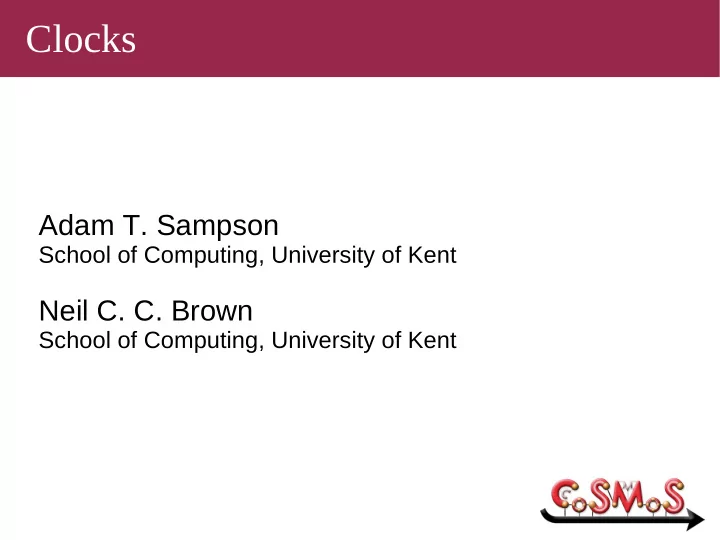

Clocks Adam T. Sampson School of Computing, University of Kent Neil C. C. Brown School of Computing, University of Kent
Motivation
My day job ● Big concurrent distributed simulations ● Lots of agents ● Discrete time steps – Implemented using a barrier – Each step divided into several phases
That's an awfully nice wheel ● Event-based simulation is very similar ● Actions occur at particular times ● Implement as priority queue of actions – Sorted by the time at which the action should occur
Barrier ● Has: – Enrollment count – Set of blocked processes ● When count == size(set), schedule all in set
Clock ● Has: – Enrollment count – Priority queue of blocked processes ● When count == size(queue), schedule all the processes that have the lowest time
Agent Smith WHILE alive ... query environment ... think ... write changes back to environment WHILE now < next.time SYNC bar
Agent Orange WHILE alive ... query environment ... think ... write changes back to environment SYNC clock, next.time ● This runs faster – because it doesn't have to wake up on timesteps where it's not doing anything (which is most of them)
Some questions ● What should the semantics for ALT be? ● Is it worth having language bindings? – This can just be implemented as a process...
Any questions? ● Clocks are implemented in CHP – go and play!
Recommend
More recommend